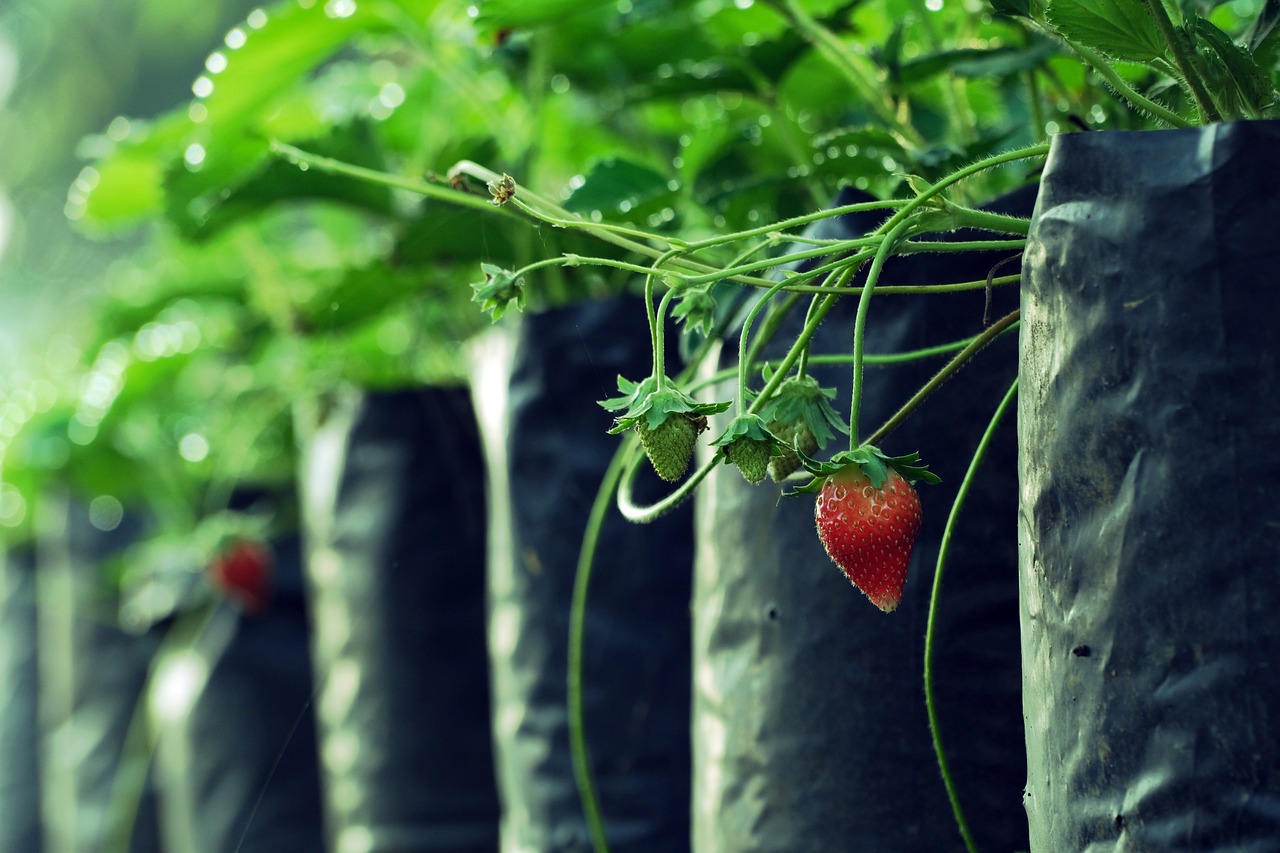
Strawberries are a delightful addition to any garden, and growing them in grow bags offers a space-saving and convenient option for both urban and traditional gardeners. In this guide, we will explore the 10 essential steps to help you grow mouthwatering strawberries in grow bags, from selecting the right varieties to harvesting your bountiful crop.
1. Choose the Right Variety
Ever-bearing, June-bearing, alpine… the strawberry world is a smorgasbord! If you’re a “one and done” kind of gardener, June-bearing varieties are perfect. Ever-bearers, like the aptly named “Albion,” keep the party going all season long. And for those with limited space, alpine strawberries offer a compact, balcony-friendly sweetness burst.
Professional Tip: Consult reputable local nurseries and online seed catalogs for varieties specifically suited to your region’s microclimate and preferences.
2. Select Quality Grow Bags
Strawberry dreams take root in the right grow bag. Look for breathable materials like felt or fabric – oxygen is key for happy roots. Don’t forget drainage! Excess water is a root-rotting villain, so ensure your bags have efficient drainage holes. Durability matters too – choose weather-proof fabrics to protect your berry haven. Finally, give those roots room to jam! At least 10 gallons per plant is the sweet spot, and don’t shy away from bigger bags for balcony beauties where space is tight.
3. Prepare the Growing Medium
Create a well-balanced growing medium by mixing high-quality potting soil with compost. This will ensure that your strawberry plants have access to the essential nutrients and a supportive environment for root development.
4. Planting Your Strawberries
Prior to planting, soak the strawberry roots in water for about an hour to rehydrate them. Plant the strawberries in the grow bags, ensuring that the crown – the point where the leaves emerge – is level with the soil surface. Space the plants approximately 18 inches apart with 4 inches between rows to allow for proper growth and air circulation.
5. Provide Adequate Sunlight
Strawberries are sun worshippers, craving at least 6-8 hours of daily sunshine. So, find them a south-facing balcony, a sun-drenched patio, or even a rooftop throne. Morning sun is their favorite, like a gentle wake-up call for their sweetness-producing factories.
6. Watering and Feeding
Maintain consistent moisture levels in the grow bags by watering the strawberries regularly, especially during the flowering and fruiting stages. Fertilize the plants with a balanced fertilizer (10-10-10) diluted in water during the growth period, and switch to a high-potash liquid fertilizer when they start to flower.
7. Pruning and Maintenance
Regularly remove any yellowing or damaged leaves, as well as the runners – the long, trailing stems that the plants produce. This will direct the plant’s energy towards fruit production, resulting in larger and more flavorful strawberries.
8. Pollination Patrol – Spreading the Love for Juicy Berries
For some strawberry varieties, like June-bearing, a little help goes a long way in the pollination department. Give them a gentle shake every now and then, or attract friendly pollinators like bees and butterflies with a splash of color nearby.
9. Mulch Mania! – Keeping the Weeds at Bay and Moisture in Play
Think of mulch as a cozy blanket for your strawberry patch. A layer of organic material like straw or wood chips helps suppress weeds, retain moisture, and keep the soil cool. Just don’t pile it too high – keep it an inch or two away from the base of the plants.
10. Support and Training
As the strawberry plants grow, provide support to the fruit-laden stems by using stakes or a trellis system. Gently train the stems to encourage upward growth and prevent the fruit from touching the ground, reducing the risk of rot and pest damage.
